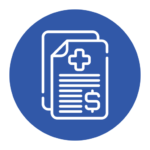In medical billing and coding, the choice between electronic and paper coding methods has been a topic of continuous discussion. Healthcare professionals must understand which strategy is best for their practice because each has particular advantages and disadvantages. Med Revolve Billing provides a comprehensive guide regarding electronic and paper coding.
Tag: outsourcing medical billing
How to Educate Patients About Medical Billing?
Understanding medical billing is crucial for patients to navigate the complex healthcare system. It includes filing claims to insurance companies so that healthcare professionals may be paid for their services. Med Revolve Billing emphasizes that educating patients about medical billing is necessary to ensure transparency, reduce issues, and promote better financial health.
Charge Entry In Medical Billing: Why Is It Important?
Medical billing is a complex process involving various steps to ensure healthcare providers receive proper compensation for services provided. One important step is charge entry, which involves accurately recording patient services and procedures. While it may seem simple, charge entry is important in medical billing. In this article, Med Revolve Billing provides a comprehensive guide to the importance of charge entry in medical billing and why healthcare providers should prefer this step.
Role Of Clear and Accurate Documentation in Medical Billing
Medical billing is an essential phase in the complex healthcare industry that makes sure healthcare professionals receive fair compensation for their services. Documentation that is clear and easy to understand is critical to this process. Med Revolve Billing emphasizes the significance of clear and accurate documentation in medical billing. Its profound impact on healthcare providers and patients, as well as the best practices that ensure its effectiveness.
Advantages of Outsourcing Medical Billing
Discover the advantages of outsourcing medical billing and how it enhances patient care. Learn more with Med Revolve Billing’s insights.












